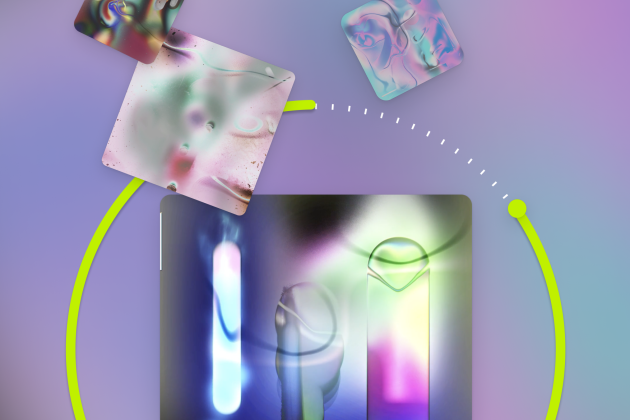Art in Motion: Marcel Schwittlick
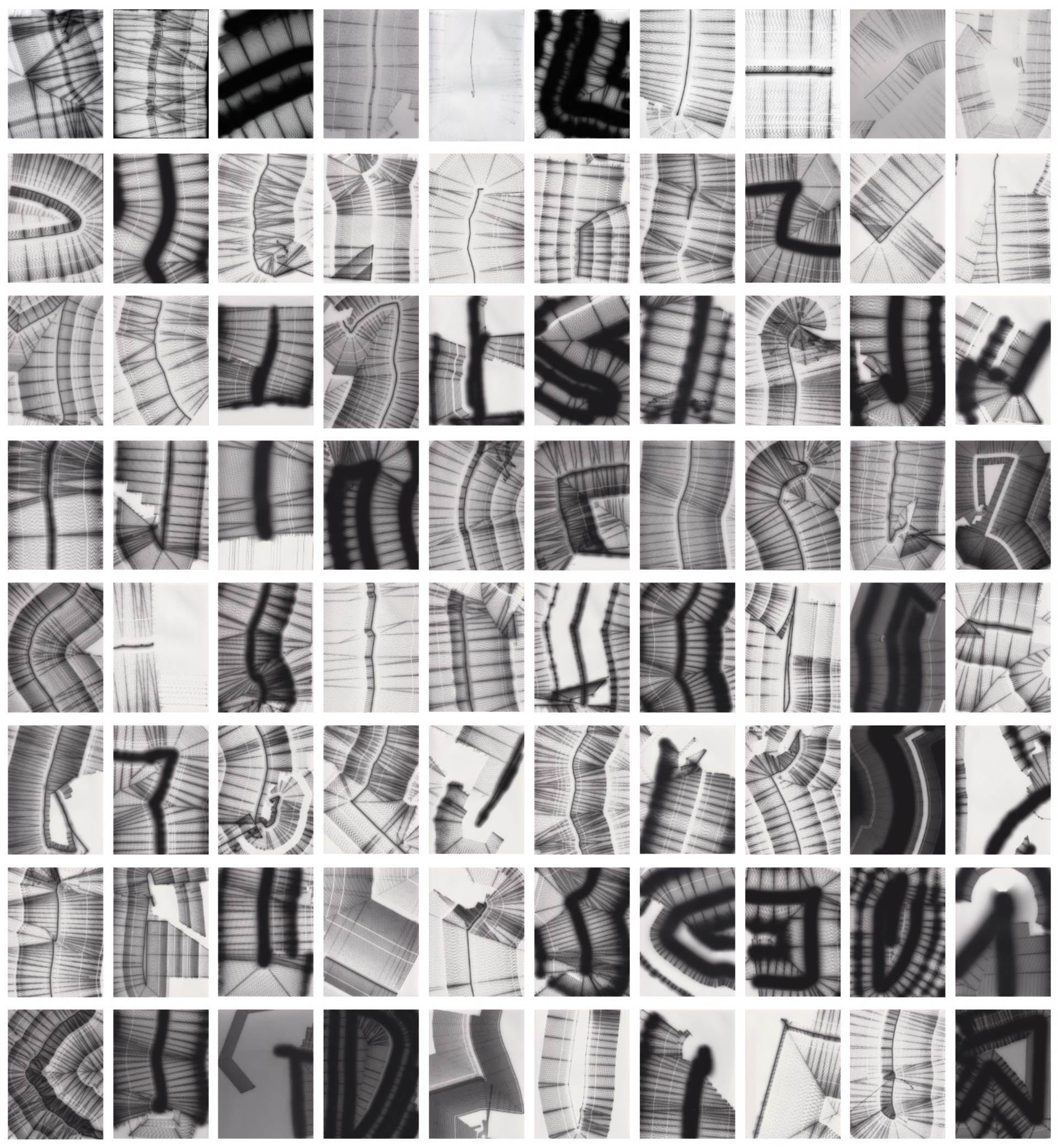
We spoke with Berlin-based artist Marcel Schwittlick about the evolution of his creative process, from studying computer science to integrating darkroom photography, and to discuss his newest body of work in the highly anticipated drop Composition #86: It is what it is.
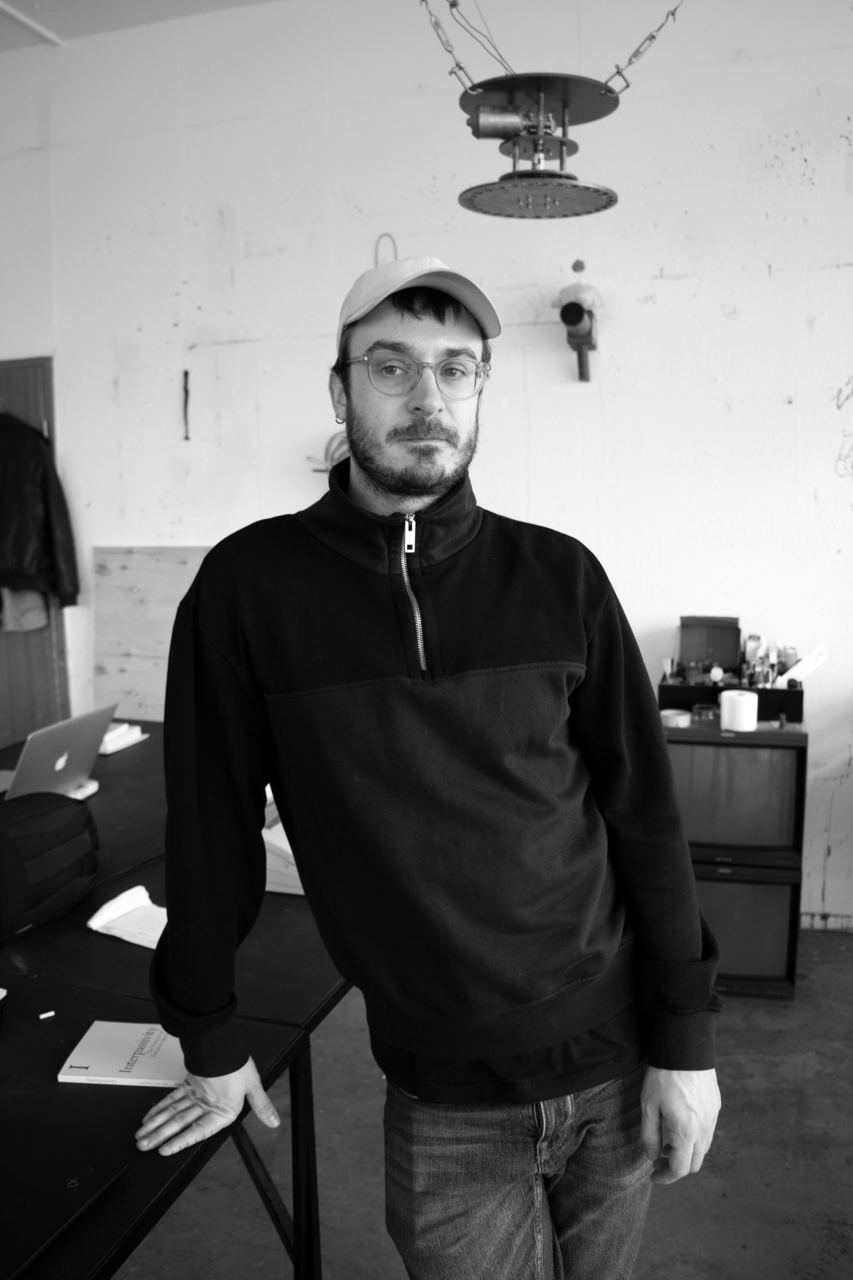
I'm curious about your connection to concrete photography and Gottfried Jäger. How did you decide to start this project?
Thank you, Charles. The decision to pursue this project came about organically while I was exploring various other ideas and trajectories. Gottfried Jäger’s book Generative Photography caught my attention in my general research, solely because of its appealing title and the introduction by Herbert W. Franke. The book is in a way a portrayal of the parameter space of photography, including many cameraless techniques like, for example, chemigrams.
It's Franke's introduction to the book that especially stands out for me. His essay motivates me, affirming that my approach isn't entirely misguided. My journey into this project stems from years of work with generative systems, algorithmic systems, data-driven ideas and plotter art.
Your work offers a blend of automatic, generative and scientific aesthetics while also giving a naturalistic feel. This appears to be the most organic body of work. What contributed to that outcome?
This series is part of a longer line of work that I've been doing for about 10 years. The composition series is algorithmic; the automatic, generative part stems from that. My early exhibitions in Berlin featured generative, real-time work, completely isolated from the world and controlled by algorithmic systems.
From there, I studied computer science and generative art. I then started looking for base data that would give me something I wasn’t able to generate algorithmically. I started using cursor lines as data, collecting millions of unique trajectories.
The organic touch in my work comes from this input as a base. The process of creating one of these pieces involves pulling a random line from the millions available. This introduces an element of natural randomness.
This element is crucial, as I believe the artist—the human element—is still very important. I want to bring my body into the work, create art on real paper with real pens.
This involves movement, unlike just sitting in front of a computer. (Don’t get me wrong, I love that, but one needs balance.) This analog process of drawing-turns-digital is algorithmically altered, and then turns back into analog through digital plotting.
You often work within constraints, yet you manage to produce something effortless and striking. How was it for you to add a photographic darkroom to your process?
I value handling all aspects of my work personally. When I’m creating works on paper, I want to be involved in every step of the creation process. This approach extends to my code writing. I value the ability to control and modify every small detail in my process, from controlling the plotter and laser, to adjusting the voltage in the power supply. This hands-on involvement allows me to explore the parameter space within my work fully. Adding a darkroom was an exciting learning experience.
For this series, I'm using an ‘80s Roland DXY-1200 plotter, which gives a distinctive sound that originates from the machine's engineering. This machine allows me to control a myriad of parameters, which significantly impact the final product.
I noticed that the speed at which I drew with the machine affected the sound it made and consequently the visual output of the piece. Some movements were slow, resulting in more light touching the paper and a different sound. The sound and the visual output of the machine are intrinsically linked; they look like they sound.
Spending six hours in a darkroom, with the green laser and red safelights being the only sources of light, while listening to the plotter's sound was a deeply immersive experience. There were 60 hours in total of this process, which was tough but enriching. There's definitely a connection between the audio and visual aspects of this process that I'm only just beginning to grasp fully.
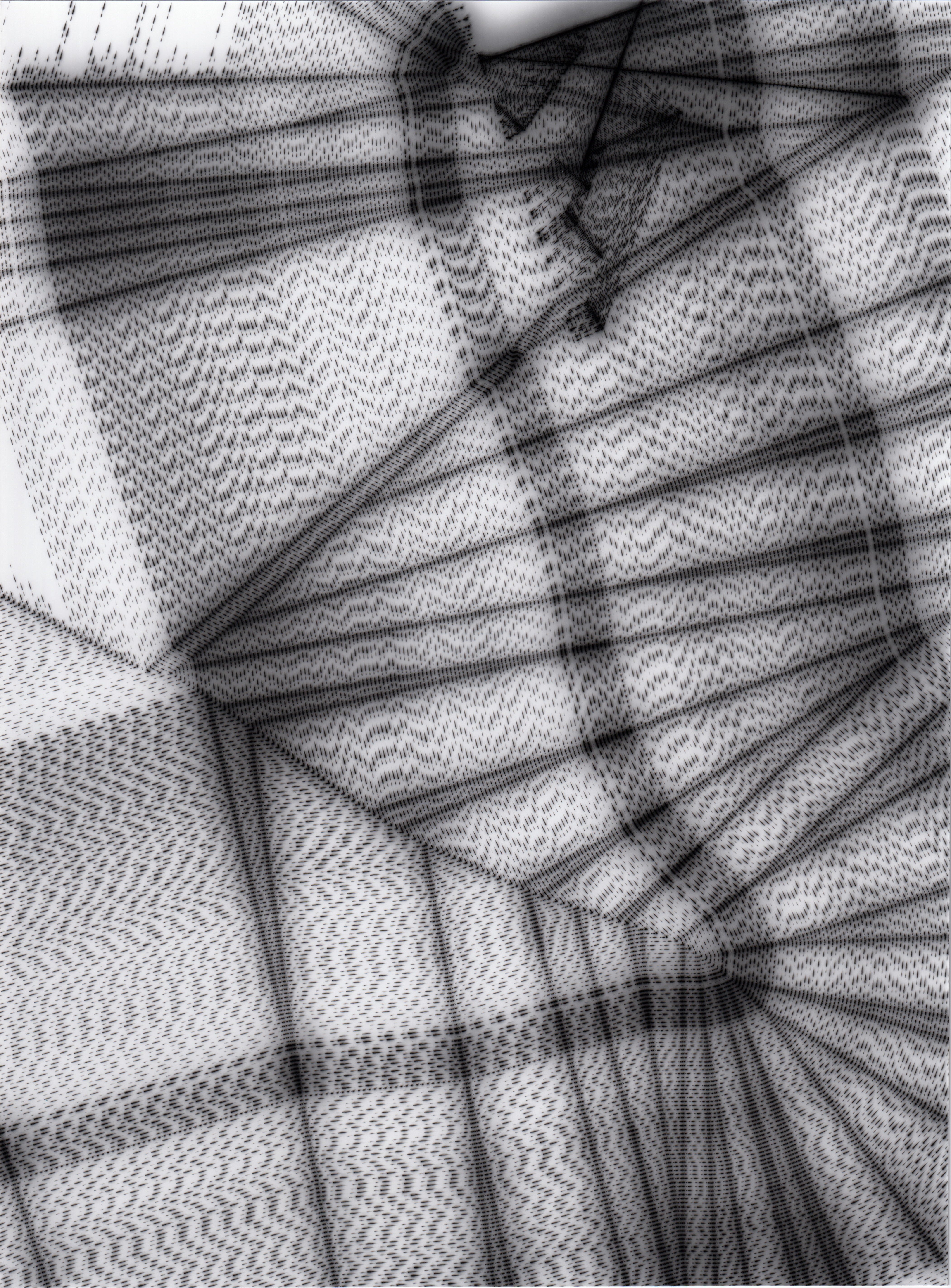
As your career is marked by more intimate works in generative art, we’re honored to host the release of your first +100-piece collection with Foundation’s Drops. What triggered you to extend your practice with this specific concept into a longer format?
I've always appreciated generative art, but the rise of NFTs and the increased seriousness towards the field rekindled my interest. Typically, my process is bottom-up: I start with a small, intriguing aspect and gradually expand it into a larger system. This process exhausts at some point, and that determines the series length or size.
Before NFTs, there wasn't much focus on how many pieces were in a collection. However, the field requires iterations of an idea—individual images—and at a certain point, you need a specific number of these. By looking at 100 images, for instance, one gets an idea about the algorithm at work without reading the code. The number of pieces needed might differ for different concepts: Some may require 1000, others less. In my view, less is better than too much.
What are your intentions when reaching a new audience with a larger body of work?
Generative art, originating from the creative coding scene, is inherently about sharing and open source. It's influenced significantly by Processing, essentially enabling the entire scene. Often, I feel like I'm creating for fellow artists, people who understand that the art is generated by code, and who can extrapolate the series from just a couple of examples. However, it's crucial and healthy for the scene to have an audience beyond insiders; it encourages a more open and accessible discussion.
Having a receptive audience providing feedback is essential for the artist to communicate effectively. To appreciate a piece of art, you need to recognize something while also encountering elements you don't know yet. This sweet spot is only possible with an audience willing to engage with the work.
The generative art scene attracted me back because it offers a space where I can mature as an artist. It's a field with endless possibilities, which is exciting. It's amazing to have a large group of artists, designers and scientists exploring the field because there's always more to be done. I look forward to seeing what others create; you can't do everything yourself. We're all part of the generative art scene, and it's fantastic to share, be open, and inspire each other.
Representing your work seems key. Specifically, you have rules for the collector and request that “upon resale on the secondary market, the original drawing shall be shipped to the new owner” via Artfora. How do you envision the ideal state of a collector presenting your work for Composition #86?
First off, people can do whatever they want with it. The pieces I collect can have different meanings and purposes. Some might be so precious to me that I store them safely, others I display openly. As the artist, I feel my responsibility is to provide context and a clear presentation in an exhibition or documentation. The way the work is displayed in exhibitions is, in my opinion, a big part of the job of the artist.
Once it reaches the collectors, it leaves my control, which is fantastic. I'm looking forward to seeing their ideas and how they choose to display it. Collecting art is a very personal thing. I'm interested in finding out how others relate to the work, and I don't want to have any influence on that.
Read more

Worlds. Meet Moments.
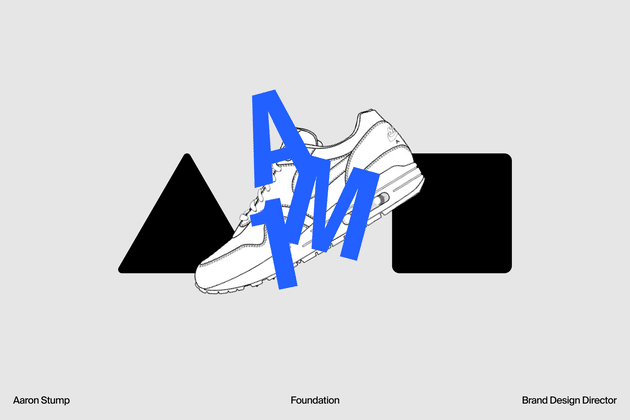
Foundation welcomes creative visionary to drive visual storytelling and brand innovation
